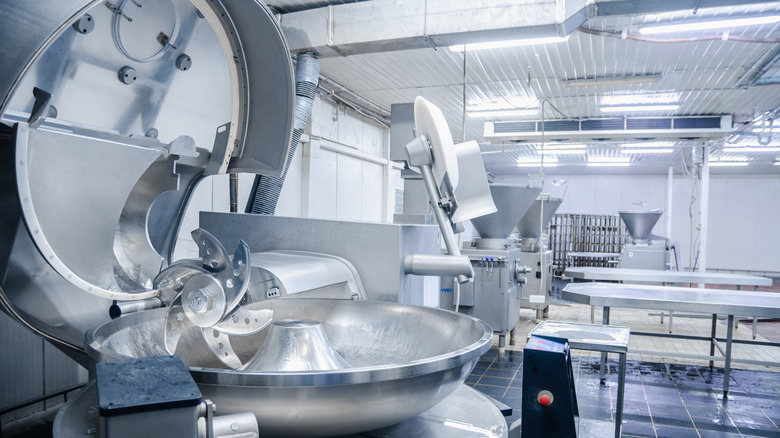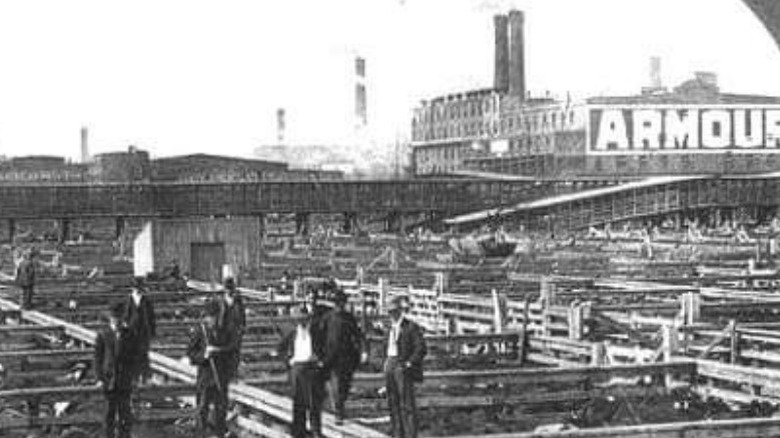Were 1900s Meatpacking Plants Really As Bad As They Say?
It's 1906 and Chicago is in the midst of an incredible transformation. Recent developments both technologically and culturally have turned Chicago into a powerhouse of American industry. The streets are flooded with native-born Chicagoans, out-of-state workers looking for a job, and immigrants from all across the world looking for a new start in the United States. The meatpacking plants of the day produced everything from hot dog sausages to canned beef.
Perhaps no piece of work better captures the industrial turmoil of 1900s Chicago more than Upton Sinclair's "The Jungle." Published in November of 1905, "The Jungle" detailed the story of Lithuanian immigrant Jurgis Rudkus and his family as they find themselves brutalized, humiliated, and driven to depravity by an uncaring, corrupt, and violent Chicago empire before finding supposed relief in the cause of socialism.
While the main plot of the story was meant to draw attention to the plight of immigrants, many found themselves revolted by the descriptions of the meatpacking houses of the day, where rat feces and spoiled meat were ground into sausage and diseased men and animals wandered through stinking cattle yards. In a time when Chicago produced an enormous percentage of the nation's meat, employing 25,000 of the 68,000 packing house employees in the U.S. (via Chicago History), people were understandably outraged. So great was the outrage that then-President Theodore Roosevelt had to send federal inspectors to see what was going on in the butcheries and meat-packing plants.
But just what was it that those inspectors found?
1900s meatpacking plants were breeding grounds for disease
One could understandably argue that Sinclair, a socialist himself, sensationalized parts of "The Jungle" in order to make his cause heard. Could the meatpacking plants of 1900s Chicago truly have been that bad or was it just overexaggerating of average work at the time?
According to Our Great American Heritage, the descriptions of those meatpacking plants weren't too far from the truth. Plant owners in Chicago focused not on ensuring a good product or worker safety, but on making as much money as possible. This involved cutting corners, hiring anyone from desperate immigrants to children, and dodging as many regulations as possible. Workers could easily be mangled in machinery, spread hair or skin into the meat through lack of gloves or hair nets, and they could spread disease into the meat– provided it wasn't diseased by rats, bugs, or old age. In a time when contaminated products like milk and meats were common (via CDC), the American people and the workers were at an incredible risk.
As the Constitutional Rights Foundation tells us, public outcry was so great that Congress moved to ratify the Pure Food and Drug Act in 1906, which would regulate the sale of food and medicine products in the United States, preventing meatpackers and other companies from skirting the law when it came to their products. Ironically, despite outcry from owners of meatpacking plants, profits actually went up following the Act, as consumer confidence in food products increased.

